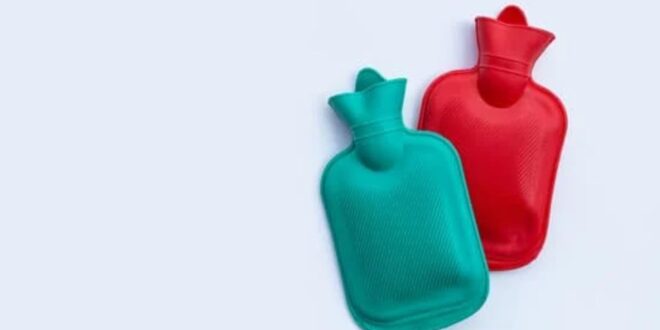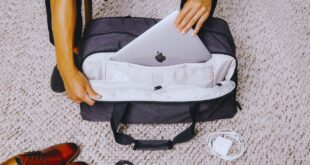Introduction to Carrying Items on a Plane
When preparing for air travel, understanding the regulations regarding what you can bring onto a plane is crucial. Adhering to airline and Transportation Security Administration (TSA) guidelines not only ensures a smoother travel experience but also helps maintain overall security. These regulations are in place to protect both passengers and crew, and non-compliance can lead to significant delays and inconveniences.
The TSA and airlines have established specific rules about items that can be carried in carry-on luggage versus those that must be checked. While some items are universally restricted, others may be subject to airline-specific policies. For example, liquids, gels, and aerosols are typically limited to containers of 3.4 ounces (100 milliliters) or less, and all must fit into a single quart-sized bag. Sharp objects, certain types of batteries, and flammable materials are commonly restricted due to safety concerns.
Knowing these guidelines beforehand can prevent unexpected confiscations and ensure that your trip progresses without unnecessary hassles. It’s essential to check both TSA regulations and the specific airline’s policies, as there can be slight variations. Items that are permissible in carry-on luggage with one airline may be restricted with another, making pre-trip research indispensable.
Moreover, understanding the rationale behind these rules can enhance compliance. For instance, restrictions on liquids and sharp objects are primarily for safety and security reasons, aimed at preventing potential threats during flight. Familiarizing yourself with these rules will not only make your travel more efficient but also contribute to overall air travel safety. By staying informed and prepared, you can minimize stress and focus on enjoying your journey.
Understanding TSA Guidelines
The Transportation Security Administration (TSA) establishes guidelines to ensure the safety and security of passengers and crew aboard airplanes. These regulations cover a wide range of items, including hot water bottles, which are subject to specific criteria under TSA rules. Understanding these guidelines is crucial for travelers to avoid any inconvenience during their journey.
TSA rules are designed with passenger safety as the foremost priority. They aim to prevent dangerous items from being carried onto aircraft, thereby minimizing potential risks. When it comes to hot water bottles, the TSA allows them in both carry-on and checked luggage, provided they are empty. This is because liquids exceeding 3.4 ounces (100 milliliters) are generally prohibited in carry-on bags unless they are in containers that meet the TSA’s liquid rules. An empty hot water bottle does not pose the same risk and is therefore permitted.
For travelers, it is essential to stay informed about the latest TSA regulations as they can frequently change. The TSA’s official website is a reliable source for updated information. Additionally, the MyTSA app can provide real-time updates and answers to specific questions about what is allowed through security checkpoints. These resources help passengers prepare adequately for their flights, ensuring a smooth and hassle-free experience.
Moreover, travelers should be aware that TSA officers have the final say on whether an item is allowed through the checkpoint. Therefore, even if an item is generally permitted, it may still be subject to additional screening or prohibited based on the officer’s discretion. It is always advisable for passengers to pack items in accordance with TSA guidelines and be prepared for any additional checks.
In summary, understanding and adhering to TSA guidelines is vital for a seamless travel experience. By staying updated through the TSA website or MyTSA app, travelers can ensure they are compliant with current regulations, thereby enhancing their overall journey.
Can You Bring a Hot Water Bottle on a Plane?
When considering whether you can bring a hot water bottle on a plane, it’s essential to refer to the guidelines provided by the Transportation Security Administration (TSA) and airline policies. According to TSA regulations, passengers are allowed to carry a hot water bottle in both their carry-on and checked luggage, as long as it complies with standard security measures.
For carry-on baggage, the primary consideration is whether the hot water bottle is empty or filled. If filled with water, it must adhere to the TSA’s 3-1-1 liquids rule, which permits liquids in containers of 3.4 ounces (100 milliliters) or less, all fitting within a single quart-sized, clear plastic, zip-top bag. Given the limited capacity allowed, a filled hot water bottle is typically not feasible for carry-on. Therefore, it is recommended to keep the hot water bottle empty when passing through security and fill it with hot water after passing the checkpoint if you need it during your flight.
In checked luggage, there are fewer restrictions regarding the contents of the hot water bottle. You may pack it filled or empty, though it is generally advisable to keep it empty to avoid potential leakage and subsequent damage to your belongings. Additionally, different airlines may have specific policies concerning the carriage of hot water bottles, so it is prudent to check with the airline you are flying with to ensure compliance with their regulations.
Overall, bringing a hot water bottle on a plane is permissible under TSA guidelines, with particular considerations for carry-on luggage. Ensuring it is empty when going through security and being mindful of airline-specific policies will help streamline your travel experience and prevent any issues related to carrying a hot water bottle on your journey.
Types of Hot Water Bottles and Their Acceptability
When planning to bring a hot water bottle on a plane, it’s essential to understand the different types available and their acceptability according to airline regulations. Hot water bottles come in various materials, including rubber, silicone, and electric models, each with distinct features and considerations for air travel.
Traditional rubber hot water bottles are the most common type. These bottles are generally acceptable on planes as they are non-electronic and do not contain any hazardous materials. However, travelers should ensure that the bottle is completely empty before passing through security, as the Transportation Security Administration (TSA) and other international security agencies have restrictions on carrying liquids. Empty rubber hot water bottles are typically hassle-free and can be packed in either checked baggage or carry-on luggage.
Silicone hot water bottles are another popular option. Like their rubber counterparts, silicone hot water bottles are non-electronic and do not pose any significant security risks. They are also usually allowed on planes, provided they are empty before the security check. Silicone hot water bottles are known for their durability and flexibility, making them a convenient option for travelers. Just ensure that the bottle is free of water to avoid any inconvenience during the security screening process.
Electric hot water bottles, on the other hand, present a different scenario. These bottles are equipped with heating elements and require a power source, which introduces additional considerations. While some airlines may permit electric hot water bottles in checked luggage, they might be more restrictive about carrying them in the cabin. It’s crucial to check with the specific airline for their policy on electronic devices and batteries. Additionally, ensure that the electric hot water bottle is switched off and any removable batteries are stored separately to comply with safety regulations.
In summary, while traditional rubber and silicone hot water bottles are generally acceptable on planes when empty, electric hot water bottles require more careful consideration and adherence to airline policies. Always verify the specific regulations of the airline you are flying with to ensure a smooth and hassle-free travel experience.
Preparing Your Hot Water Bottle for Air Travel
When planning to bring a hot water bottle on a plane, proper preparation is key to ensuring a smooth travel experience. First and foremost, it is crucial to decide whether to pack your hot water bottle empty or filled. For air travel, it is highly recommended to keep the hot water bottle empty. This is because airport security regulations and pressure changes during flight make carrying liquids more complicated. An empty hot water bottle will easily pass through security checks and avoid potential leaks or spills in your luggage.
Once you have decided to carry it empty, the next step is to pack the hot water bottle securely. Begin by ensuring the bottle is completely dry to prevent any mold or mildew growth. You can achieve this by wiping it with a clean, dry cloth and allowing it to air out for a few hours before packing. When placing the hot water bottle in your luggage, consider using a protective cover or case to shield it from sharp objects or pressure that could cause damage. A soft cover also helps to cushion the bottle against any impacts during transit.
In terms of luggage placement, it is advisable to store the hot water bottle in your carry-on bag. This approach not only makes it more accessible for use during the flight but also minimizes the risk of it being damaged in checked baggage. To further prevent any potential damage, pack the bottle amidst soft clothing or other padded items to provide additional protection.
Following these practical tips will help ensure your hot water bottle remains in good condition and ready for use upon reaching your destination. Proper preparation and packing can make all the difference in maintaining the functionality and longevity of your hot water bottle while traveling by air.
Alternative Options to Consider
When it comes to finding a suitable substitute for a hot water bottle during air travel, several alternatives can cater to your needs. One popular option is an electric heating pad. These devices are convenient and efficient, providing consistent warmth. Many models are designed to be compact and lightweight, making them ideal for travel. However, it is important to ensure that the heating pad is compliant with airline regulations, as some airlines may have specific rules regarding electronic devices.
Another viable alternative is disposable heat packs. These single-use items are activated by shaking or breaking a small internal component, releasing heat for several hours. Disposable heat packs are lightweight, easy to pack, and do not require an external power source, making them a practical choice for travelers. The primary downside is their one-time use, which may not be environmentally friendly or economical for frequent travelers.
For those seeking a more sustainable option, reusable gel packs can be a great choice. These packs can be heated in a microwave or hot water before use and provide long-lasting warmth. They are also lightweight and travel-friendly. The main drawback is the need for a heat source to activate them, which may not always be readily available during travel.
Additionally, battery-operated hand warmers are another alternative worth considering. These devices are compact, easy to carry, and can be recharged using a USB port. They offer the benefit of being reusable and can provide warmth for several hours. However, similar to electric heating pads, travelers must check airline regulations to ensure compliance.
In summary, while a hot water bottle remains a traditional and effective method for staying warm, several alternatives are available for air travel. Electric heating pads, disposable heat packs, reusable gel packs, and battery-operated hand warmers each offer unique advantages and disadvantages, allowing travelers to choose the option that best suits their needs and preferences.
Real-Life Experiences from Travelers
Travelers often share a variety of experiences when it comes to bringing a hot water bottle on a plane. These real-life anecdotes provide valuable insights and practical tips for others considering the same. One frequent flyer, Emily, recounted her experience of traveling with a hot water bottle on an international flight. She noted that she had no issues passing through security, as the bottle was empty and packed in her checked luggage. Upon arrival, she filled it with hot water from a cafe at the airport, which proved to be a great comfort on her long-haul journey.
Conversely, John’s story highlights the challenges one might face. He attempted to bring a pre-filled hot water bottle in his carry-on bag. Unfortunately, due to security regulations concerning liquids, he was asked to discard it before boarding. This experience underscores the importance of understanding the rules about carrying liquids and how they apply to items like hot water bottles.
Another traveler, Sarah, shared a different perspective. She brought an empty hot water bottle in her carry-on and requested the flight attendants to fill it with hot water during the flight. The cabin crew was accommodating, and she was able to use the bottle to stay warm throughout her trip. Her positive experience suggests that while there might be hurdles, cooperation with airline staff can lead to a successful outcome.
These stories from fellow travelers illustrate that while bringing a hot water bottle on a plane can be feasible, it requires some foresight and adaptability. Whether opting to pack an empty bottle in checked luggage or seeking assistance from flight attendants, understanding and adhering to security protocols can make the process smoother.
Conclusion and Final Tips
In summary, bringing a hot water bottle on a plane is generally permissible, but it’s essential to be aware of specific airline and TSA regulations to ensure a smooth travel experience. As discussed, empty hot water bottles are usually allowed in both carry-on and checked luggage. However, filled hot water bottles may pose a problem due to liquid restrictions for carry-on bags. Always check the latest guidelines from your airline and the TSA to avoid any inconveniences.
To further ensure a hassle-free journey, consider these final tips. First, opt for a high-quality, leak-proof hot water bottle to prevent any accidental spills. If you plan to fill it after passing through security, make sure you have access to hot water at your departure or destination airport. Alternatively, you can use a microwaveable heating pad or an electric hot water bottle as they can be more convenient and easier to manage during travel.
Additionally, it is advisable to pack your hot water bottle in a way that makes it easily accessible during security checks. This can expedite the screening process and reduce any potential delays. If you are uncertain about the rules, don’t hesitate to contact your airline directly for clarification. Being well-prepared and informed will save you time and stress, allowing you to focus on enjoying your trip.
In conclusion, while traveling with a hot water bottle is generally feasible, taking the time to understand and comply with airline and TSA regulations is crucial. By following these final tips and ensuring you are well-informed, you can enjoy the comfort of your hot water bottle without any travel disruptions.
 Travelers Journey Hub
Travelers Journey Hub




